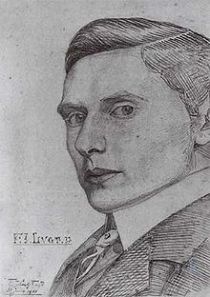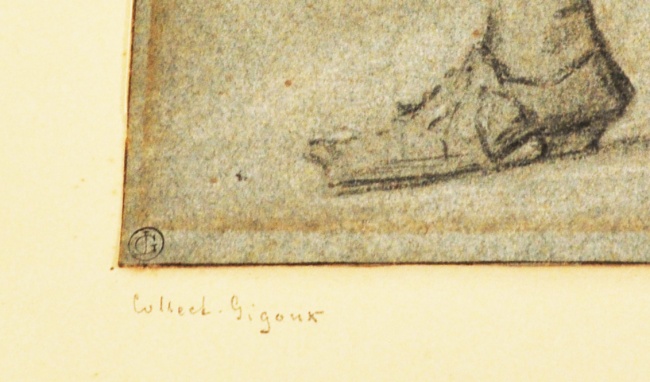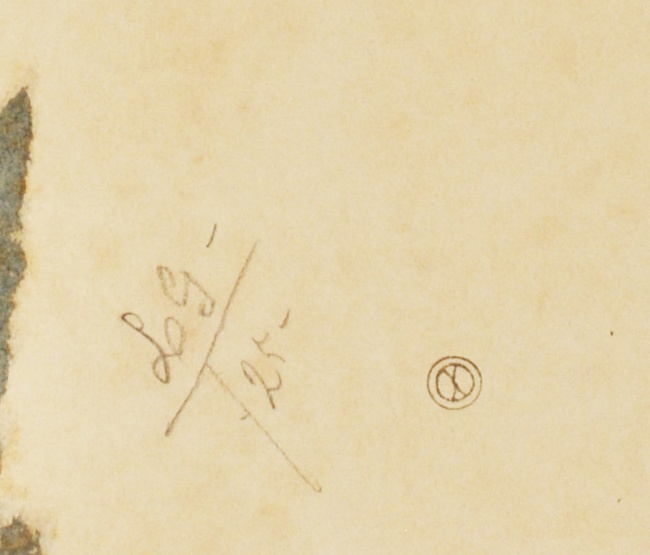The Dutchman: A Provenance
by Kyle
Who might this be you ask? This is the picture of a man that plays a large role in building my provenance of the drawing in question. The next portion of my journey began with the inscription “Collect Gigoux.” My search returned a name, one Jean Gigoux, among many things. But this name was the most prominent of the bunch. First stop, his wikipedia article. I know I know, not the most scholarly of sources, but I usually check the references to see if they’re legitimate and use them as my source. The English page on Gigoux was severely lacking, but the French page was a whole different story. It was what I read here that made me believe I was on the right track. Jean Gigoux, a 19th century French art collector and artist, dealing in lithography and illustration, studied at the Institute of Fine Arts in Besançon Franche-Comté. Over the course of his lifetime, Gigoux collected thousands of artworks, selling the majority at four cataloged sales and bequeathing approximately 3500 works the Museum of Fine Arts and Archaeology of Besançon upon his death. Due to his prominence as a collector, I figured it was time to discover the identities of the two collection stamps bared by my drawing.
Now, let me give a word of caution here. When googling anything that has to do with the two words stamp and collection, no matter how they are phrased, you’re going to find everything you need to on stamp collecting and nothing you need to know on collection stamps. After narrowing down search requirements, I finally came across a website devoted to the Frits Lugt database. This database was created from the works of Frits Lugt, who spent his life collecting Netherlandish works of art. Through his collecting efforts, he was able to compile the definitive repertory on collector’s marks and stamps as well as amassing a sizable collection of auction catalogs from the 17th century through the 20th century. Although in French, Google Chrome was able to translate everything I needed except for the actual search bar. But, after a few tries, I was able to navigate myself to the stamp of Jean Gigoux. And wouldn’t you know it. It was a match!
One collection stamp down, one more to go. This one was a little more difficult, as I had nothing else to go on. All I can say is thank god for the similarities between some French and Spanish words because there were a lot of options when it came to the general search function. I started off my search by initials. A few thousand tiny thumbnails later I had come up with zero matches. Next were the types of marks. I chose the stamp selection, and was given a list of more than 6,000. I quickly hit the back button as I couldn’t fathom how my eyes would feel after scanning every single one of them. I decided to search by the general shape of the stamp, which returned only about 2,000 results. It was night time and I had nothing better to do, so I journeyed on. Once again, I made it through the alphabet with no matches in sight. My eyes were tired and I had just reached the geometric pattern portion of the circular stamp search, something I now commonly refer to as the great CSS of 2013. I must have been on page 40 or 50 when I had just clicked the suivant button, err, next (in French) button when something caught my eye. I quickly went pack to the previous page and there way my second collection stamp. The whole time I had been looking for a stamp at the wrong angle. The one pictured was a 90 degree rotation of the one I had been looking for. I’m surprised even now that my tiring eyes caught such a thing. My drawing now bared the marks of Jean Gigoux and Rudolph Goldschmidt, a prolific collector of European pieces of art, almost exclusively dealing in Dutch works.
I could finally see a provenance building. A rough provenance, but a provenance nonethless. I had two 19th century collection stamps and a consignors name. To get a more solid story of the piece, I’d have to get my hands on a copy of one of the Gigoux sales catalogs. The nearest catalog is 300 miles away at the University of Maryland, or a subscription fee to BrillOnline for access to the Art Sales Catalog Online. Road trip anybody?


